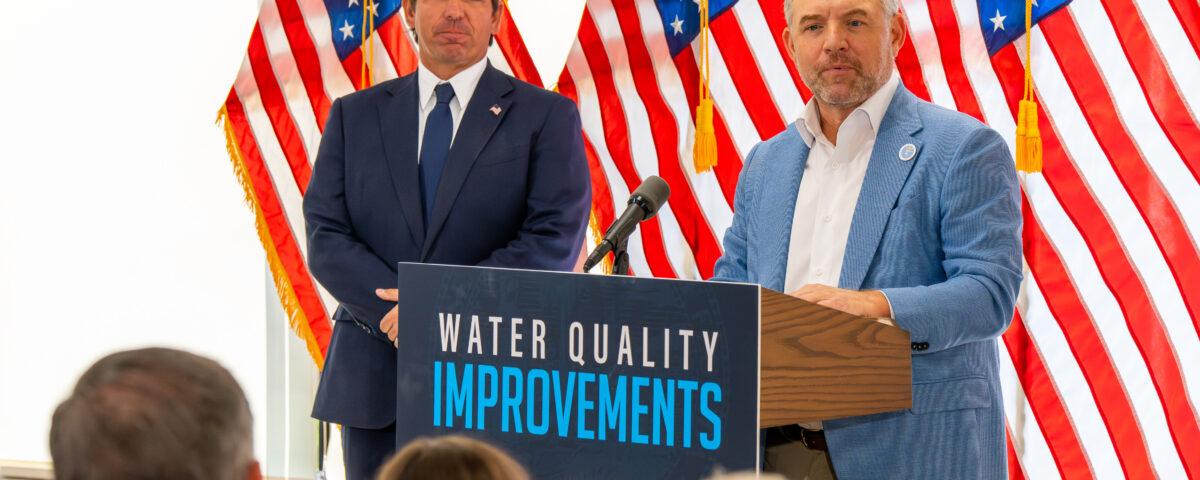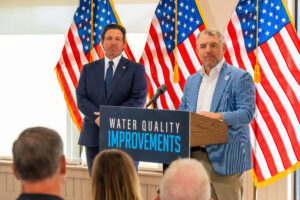Governor, partners celebrate project to protect Indian River Lagoon

St. Johns River Water Management District Governing Board Chair Rob Bradley speaking at the Crane Creek / M-1 Canal Flow Restoration project celebration with Gov. DeSantis.

St. Johns River Water Management District Governing Board Chair Rob Bradley speaking at the Crane Creek / M-1 Canal Flow Restoration project celebration with Gov. DeSantis.
Gov. Ron DeSantis joined the St. Johns River Water Management District (District), the Florida Department of Environmental Protection (DEP) and Brevard County today to mark the completion of the Crane Creek/M-1 Canal Flow Restoration Project, a major step forward in efforts to improve water quality and protect the Indian River Lagoon (IRL).
The $23.2 million project is the result of a strong partnership among state and local agencies.
“This was a team effort every step of the way,” said St. Johns River Water Management District Executive Director Mike Register. “From the Florida Department of
Environmental Protection to Brevard County and our dedicated staff at the District, this project shows what we can accomplish when we work together.”
The M-1 Canal is a 100-year-old, man-man flood control structure in Brevard County that previously cut across a natural historic drainage divide between the St. Johns River and the IRL. As a result, water that once flowed west toward the St. Johns River was diverted east to IRL via Crane Creek. Stormwater from more than 5,000 acres flowed through the canal and into the IRL. The new project reestablishes that vital flow west, where it is treated before entering the St. Johns River Basin. The change significantly reduces nutrient-rich runoff into the lagoon and helps improve its overall health.
“This project demonstrates that sustained investment in our water resources works,” said former Sen. and current Chair of the St. Johns River Water Management District Rob Bradley. “We’re grateful to Gov. DeSantis and the Florida Legislature for their ongoing support of the lagoon and the people who depend on it.”
The completed project includes an operable weir, two pump stations and a constructed stormwater treatment area. The system captures excess flow from the M-1 Canal, routes it through the new treatment area, and discharges it to the St. Johns River Marsh. The water ultimately works its way through the marsh to the St. Johns River.
The restored flow will reduce nutrient loading to the IRL by an estimated 24,000 pounds of nitrogen and 3,100 pounds of phosphorus each year. It also provides an alternative water supply source, returning approximately 7 million gallons of freshwater per day to the St. Johns River.
“Projects like this are about more than pipes and pumps,” Bradley said. “They are about preserving the lifestyle, environment and economy that make this part of Florida so unique.”
Originally identified in the District’s 2017 Indian River Lagoon Stormwater Capture and Treatment Feasibility Analysis, the project is part of a larger, long-term effort to restore water quality in the lagoon and improve the resilience of the region.
“The Indian River Lagoon is a place where families fish, boat and enjoy the outdoors. It supports local businesses and jobs,” Bradley said. “We all have a role to play in protecting it, and that means continuing this momentum with science, innovation and collaboration.”

